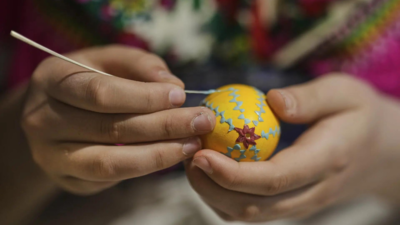Reviving Tradition: The Influence of East Asian Design on Modern Architecture and Culture

The evolving landscape of East Asian design is a vast and intricate subject, encompassing a rich tapestry of crafts and skills that have developed over centuries. Attempting to encapsulate an entire continent under a singular design philosophy would be an ambitious challenge. However, a common theme among the stories highlighted here is the celebration of the skills and cultural traditions that are being rejuvenated, adapted, and made relevant in todays design vernacular.
In Kurume, Japan, renowned architect Toru Shimokawa operates from a studio adjacent to the very home in which he was born, although it is not the same structure. This peculiarity of Japanese architectural practice often sees young architects reconstructing family homes, reflecting the cultural norm of demolishing properties after a lifespan of 20 to 30 years. Shimokawa's journey into architecture began with a previous family residence, which he replaced with a striking concrete structure. However, in 2015, he took a more nuanced approach, integrating traditional Japanese design elements while simultaneously reinterpreting them in a modern context. Leo Lewis recently traveled to Kyushu to meet with Shimokawa and explore his architectural projects, noting that at just 42 years old, Shimokawa is an unconventional figure in the realm of Japanese architectureself-taught and blazing his own trail.
Meanwhile, Felix Conran, grandson of the illustrious Sir Terence Conran, is also engaging with traditional design to foster a new way of living. Conran, alongside his partner, stumbled upon a quaint forest village named Higashiyoshino, located in Nara, during a road trip in 2023. The area was dotted with numerous abandoned houses, inspiring Conran to breathe new life into these neglected structures through his new venture, Ha Partners. The first property he revitalized has become his residence, set against a backdrop of serene woodlands. Conran's project has been enriched by the support of local senior residents who have generously shared their invaluable knowledge and craftsmanship.
The cultural significance of sento, or public bathhouses, cannot be understated; they once served as vital communal hubs in Japanese urban life. However, their numbers have dwindled dramatically over the years due to societal shifts and the convenience of in-home bathrooms, plummeting from nearly 18,000 in the 1960s to just around 2,000 today. Fortunately, a new wave of contemporary designers is dedicated to reviving the sento experience. As Clara Baldock explores, these public baths boast unique artistic signatures and artisanal traditions that also require preservation. The innovative projects showcased in her piece inspire hope that the sento will experience a renaissance in popularity.
Turning to Seoul, South Korea, we find Jay Lim, the founder of the lifestyle brand Say Touch, who passionately discusses why his hometown is currently experiencing a golden era of design. He attributes this flourishing creative environment to a youthful demographic that is respectfully redefining modern social norms. Lim explains, This generation excels at leveraging media and technology while rooted in traditional values. He further notes that concepts like house parties are gaining traction in Korea, indicating a cultural evolution that embraces both the new and the traditional.
Looking towards the future, Matt Vella delves into the automotive industry, highlighting Hyundai under the direction of Lee Sang-yup, the head of its Global Design Center. Under Sang-yup's leadership, Hyundai has transformed into a trailblazer within the industry, embracing progressive design principles. Rhodri Marsdens exploration of robotics raises compelling questions about our expectations from humanoid robots. Are these machines merely intended to perform basic tasks for us, or do they reflect an inherent desire for companionship or emotional connection? Despite our rational understanding, robots often trigger deep-seated emotional responses within us. Perhaps it is not the robots we should fear, but rather the humans who attribute them with a sense of reality.


















